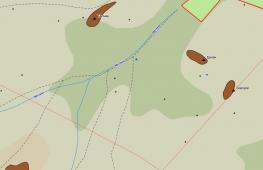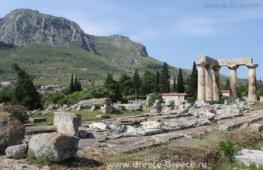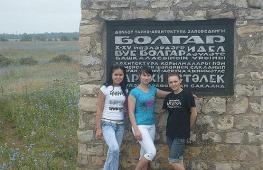Detailed climate map of the Altai region. Detailed map of the Altai region with cities and towns
Map of the Altai Territory from satellite. Explore the satellite map of the Altai Territory online in real time. A detailed map of the Altai Territory was created based on satellite images high resolution. As close as possible, the satellite map of the Altai Territory allows you to study the streets in detail, separate houses and sights of the Altai region. The map of the Altai Territory from a satellite can easily be switched to regular map mode (diagram).
Altai region- region in Western Siberia. This is one of the most beautiful corners not only in Russia, but throughout the entire continent. Several large rivers flow through the territory of the Altai Territory - Katun and Biya, which, merging, form a single river Ob.
The Altai region, surrounded by mountain ranges, is a favorite place for environmental travelers and lovers extreme species sports. Often called the second most beautiful Switzerland, but unlike Alpine mountains, Altai region is cleaner and calmer in terms of tourism.
This region is rich in its resort resources, which include clean mountain air, plenty of sun, mineral springs with healing water and much more.
Going to Altai region, each traveler can choose the most suitable a tourist route and type of tourism. One of the most popular and interesting tours offered by numerous travel agencies is climbing Mount Aktru. During this tour, tourists will be able to get acquainted with the nature of the region and plunge into its unique atmosphere.
In addition, a trip to the Altai Territory can be diversified with other activities: horseback riding and camel riding, bicycle tours, skiing and snowboarding, relaxing at camp sites and sanatoriums near mineral springs, as well as rafting on raging rivers.
Best resorts Altai Territory– this is Belokurikha for those who want to spend a calm, relaxed holiday in radon baths, the city of Yarovoy, famous for its healing mud, and the village of Solonovka, where various sports competitions are held annually.
The Altai region is famous for its unique nature and favorable climate. With a satellite map of the Altai Territory, it can be found on the territory of Western Siberia.
The map is a reliable companion on any journey; with its help you can find out exact distances. This area stretches from east to west over a distance of more than 600 km. The map will help you find a convenient path to the desired object.
The routes of the Altai Territory on the map show that from Moscow to this region there are just under three thousand kilometers. This is if you go by train. You will have to cover a distance of 3.6 thousand kilometers in your car.
Almost all natural zones of Russia are found in the region. These are taiga, mountains, and vast steppes. There are a huge number of caves in the foothills.
The leading industries of the region are mechanical engineering and agriculture.
Central regions on the map of Altai Krai
When looking for areas on the map of the Altai Territory, it is worth highlighting the following objects:
- In the eastern region of the region there is Biysk district. The terrain is mostly hilly. Gravel and sand are mined on its territory. Numerous rivers flow through the area: Shubenka, Biya, Katun.
- Zarinsky district not so long ago it was called Sorokinsky. On its territory, development and extraction of materials for the further creation of cement and brick are underway. Using a map of the Altai Territory, more than 50 settlements in a given area can be identified by region.
- One of the central regions is considered Rubtsovsky. This area has flat terrain and steppe vegetation. Agriculture is one of the most important areas of activity. Also in the region there are motor transport enterprises, and a variety of ores are mined. Important routes to Barnaul and Zmeinogorsk pass through the area.
- In the northeast is Pervomaisky district. This is one of the most developed and richest areas of the region. On its territory, with a detailed map of the Altai Territory, you can find organizations in the woodworking industry, as well as agricultural farms. The area is crossed by the railway artery and the P 374 m M 52 highway. There are many attractions in the area. Worth a look archaeological sites that belonged to the ancient Scythians.
Using a road map of the Altai Territory will allow you to find all areas of the region and its attractions.
Diversity of cities and villages of the Altai Territory on the map
The Altai region is full of many interesting cities. The most famous include the following:
- It is believed that the city of Barnaul was founded by the miner Demidov in the 18th century. After the war, the city gained fame as an industrial center. Manufacturing enterprises, as well as retail and wholesale trade, are actively developing in the city. Famous attractions that the map of the Altai Territory displays in detail include Lenin Avenue with beautiful chapels and openwork lanterns, as well as a building with a spire and a bridge spanning the Ob.
- Biysk is considered a city that opens the gates to the mountainous part of Altai. Many tourist routes start from here. This city has local history museum, more than 260 architectural, natural and archaeological monuments.
- Zarinsk grew out of the village of Sorokino, which appeared in the 18th century. The city is geographically located on the coast of the Chumysh River. This is clearly demonstrated by the map of the Altai Territory. An important enterprise of all settlement Altai is considered to be coke. Also in the city there is a multidisciplinary construction company, a butter and cheese plant and an elevator.
- Rubtsovsk is considered one of the main cities. Manufacturing enterprises are easy to find with a map of the Altai Territory with cities in good quality.
- Novoaltaysk is considered the center of the Pervomaisky district. It is located on the banks of the adjacent river, the Ob. The city has a large railway junction. This is a city with developed industry. It has a large machine-building enterprise, a reinforced concrete products plant, as well as numerous enterprises Catering and trade.
Economy and industry of the Altai Territory
Using a map of the Altai Territory with cities and villages, you can easily find the desired enterprise in the city. The main component economic life The city is considered mechanical engineering. Enterprises in this industry produce freight cars, drilling rigs, and generators for cars and tractors.
Also, a significant share of the region's industry comes from defense industry enterprises.
Yandex maps of the Altai Territory will allow you to find food industry enterprises. These are grain processing plants, as well as meat and dairy products.
Among the large enterprises, it is worth highlighting the motor, tractor and carriage factories.
Chemical industry organizations include the sulfate plant and Stepnoe Lake.
With a map of the Altai Territory with villages, you can find enterprises engaged in potato growing and various vegetable growing.
In the region for Lately production of eggs, milk and meat increased.
The Altai Territory actively conducts trade relations with Kyrgyzstan, Azerbaijan and Uzbekistan.
Altai region has rich natural resources and various industrial enterprises.
Altai is a republic consisting of Russian Federation. Satellite map Altai shows that the region borders China, Kazakhstan, Mongolia, the Republic of Tyva, Kemerovo region, Khakassia and Altai Territory. The area of the region is 92903 sq. km.
The territory of Altai is mountain ranges with river valleys and basins crossing them. Due to the terrain, the main economic sectors in the republic are livestock farming, agriculture and tourism.
Altai is divided into 10 municipal districts, the only city of Gorno-Altaisk (capital) and 248 rural settlements.
Mount Belukha in Altai
Brief history of Altai
Altai is considered the ancestral home of all currently existing Turkic peoples. In 552, the Turkic Khaganate was formed here, and later the Kalmyk Dzhukhar Khanate appeared on the territory. In 1756, the Khanate fell and its inhabitants voluntarily became part of the Russian Empire.
In 1919, Soviet power was established in Altai. In 1922, the Oirat Autonomous Region was created, which in 1932 was renamed the Oirot Autonomous Region. In 1948, the Gorno-Altai Autonomous Region was created. In 1990, the region was transformed into the Gorno-Altai Autonomous Soviet Socialist Republic, and in 1993 - into the Altai Republic.

Karakol lakes in Altai
Sights of Altai
On a detailed map of Altai you can see that the region is rich in natural attractions. Main natural monument is the Altai Nature Reserve. On the territory of Altai there is the most high mountain in Siberia - Belukha (height 4506 m).
It is recommended to visit the Katunsky Nature Reserve, natural park“Beluha”, see the cascade of Karakol lakes, each of which differs in color and composition, and relax on Lake Teletskoye. In Altai it is worth seeing the Korbu, Kamyshinsky and Tekelya waterfalls, the Shavlinsky lakes and Lake Menzherok, the Karokokshinsky and Museum caves, the Charyshsky and Tavdinsky caves, the island of Patmos and the Iconostasis rock.
Altai Territory is a region located in the southeast of Western Siberia. A map of the Altai Territory shows that the region borders the Kemerovo and Novosibirsk regions, Kazakhstan and the Altai Republic. The area of the region is 167,966 km2.
The Altai Territory is divided into 59 rural districts, 12 cities and 1 closed territorial entity. Largest cities region – Barnaul ( administrative center), Biysk, Rubtsovsk, Novoaltaisk and Zarinsk.
The region contains unique deposits of granite, porphyry, marble and jasper. The economy of the Altai Territory is based on the work of machine-building enterprises, defense industry enterprises and the food industry. Agriculture plays a major role in the region's economy.
Historical reference
The settlement of the region began in the second half of the 17th century. Until the mid-19th century, the region had a well-developed mining industry. After 1861, factories and mining operations began to close. Agriculture began to actively develop.
In 1937, the Altai Territory was formed. During the Great Patriotic War, numerous factories and enterprises were evacuated to the region. In the mid-60s and 70s, large-scale development of virgin lands began.

Must Visit
On a detailed map of the Altai Territory you can see the natural attractions of the region: Kulundinskoye Lake, 33 natural reserve, mountains Charming, Sinyukha and Semipeschernaya, lakes Beloe, Mokhovoye and Aya. It is recommended to visit the cities of Barnaul, Biysk and Rubtsovsk.
The resort town of Belokurikha, the rock “Four Brothers” near Belokurikha, the Tigiretsky Nature Reserve, the cascade of waterfalls on the Shinok River, the caves “Hyena’s Lair”, “Altaiskaya”, “Geofizicheskaya”, “Terrible” and Tavdinsky caves are a must-see.
Siberia in Russia and the Altai Territory, as part natural resources our country has always been interesting to the whole world. The south-eastern region of Western Siberia, like a magnet, attracts the attention of lovers of recreation among nature. The uniqueness, originality, generosity of the Siberian open spaces - there is room for the Russian soul to roam.
Russia. Altai region
And how many rivers and lakes there are, on the banks of which there are many popular places recreation!
Imagine that the total length of flowing rivers (17,085 pieces) is 51,004 km! The rivers Biya and Katun, merging, form the Ob - the most important water artery of the region. Such people are still pouring into the Ob large rivers, like Charysh, Alei and Chumysh.
Barnaul is the capital of the region (founded in 1730 by one of the famous Demidov family). Currently, more than 600 thousand Siberians live in it, theaters (4), museums (4), libraries (27), recreation parks (7) and cinemas (4) are thriving.
Altai region. Barnaul. Satellite map online
(This map can be controlled using the mouse, as well as the signs in the left corner of the map)
Maps of Altai Krai:
There are many sunny days here a year.
July weather is often 26-28 degrees, which is just great for comfortable rest. Although the temperature in summer max t° is up to 40°, and in winter – up to 50°, this is the maximum that is not considered the main one.
Such a temperature difference occurs in a moderately harsh continental climate.
120 days without frost are enough for flowering and rapid development local rich nature. Altai herbs are in great demand throughout Russia.
Lakes full clean water and fish, are located mainly among the steppes of the region.
The size of the lakes is also impressive:
Kulundinskoye Lake – 792 sq. km
Kuchuk Lake – 181 sq. km
Gorky Lake – 140 sq. km
Big Poplar Lake – 76 sq. km
Big Yarovoye Lake – 66.7 sq. km
The beauty is completely different natural areas- forests, steppes, tundra, swamps, bushes, rock groups, amazes and delights again and again.
The living creatures that breed and prosper on this generous land are numerous and varied. Some of them are recorded in the Red Book.
Natural resources in Altai are unique in composition and quality.
Deposits of iron, coal, chromium, manganese, titanium, tungsten, nickel, vanadium and many other rather rare minerals are developed here.
The Altai region is also famous for its jasper, marble, and granite.
Quantity and unique composition mineral waters, underground drinking water, healing mud famous and in demand in the development of sanatorium treatment and resort areas.
There is something to benefit from both the food and chemical industries.
The list of Altai nature reserves is truly impressive:
Lake Manzherok
Katu-Yaryk pass
Kolyvan Lake
Chike-Taman pass
Turquoise Katun – archaeological park
Tigireksky reserve
Any of these places are interesting to relax, explore and admire. A visit to Altai will enrich and decorate your life and will remain in your memory forever.



